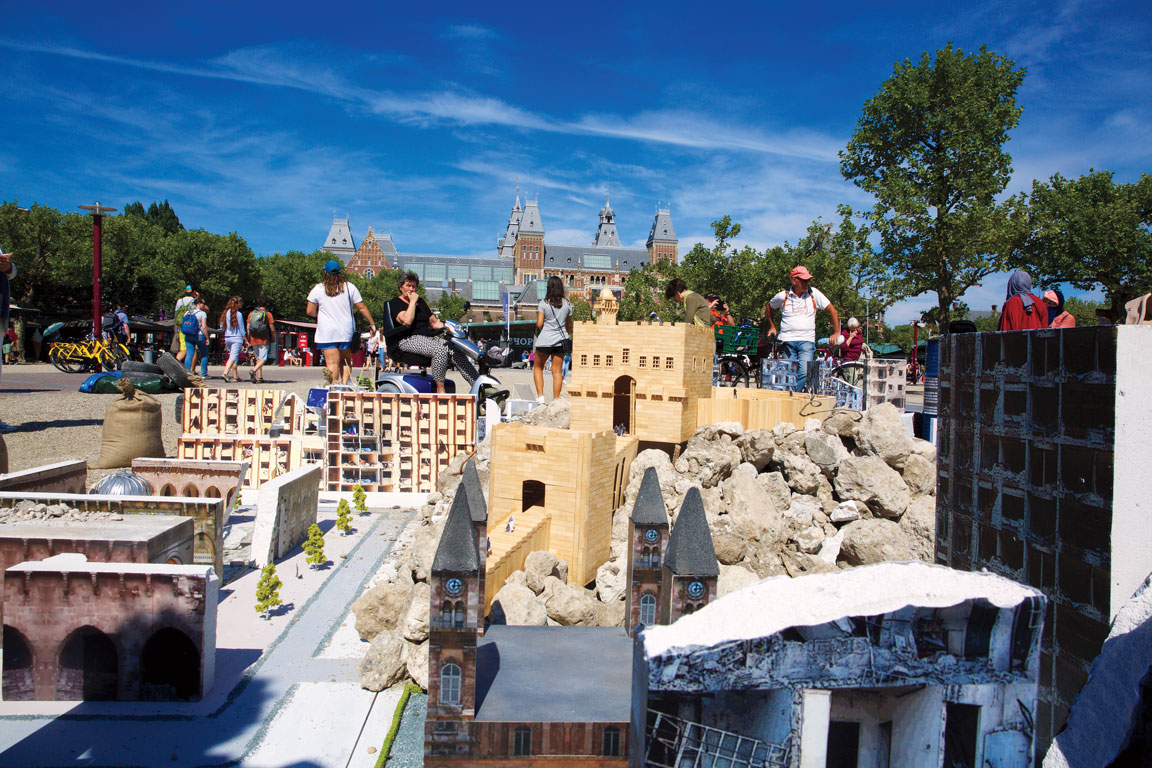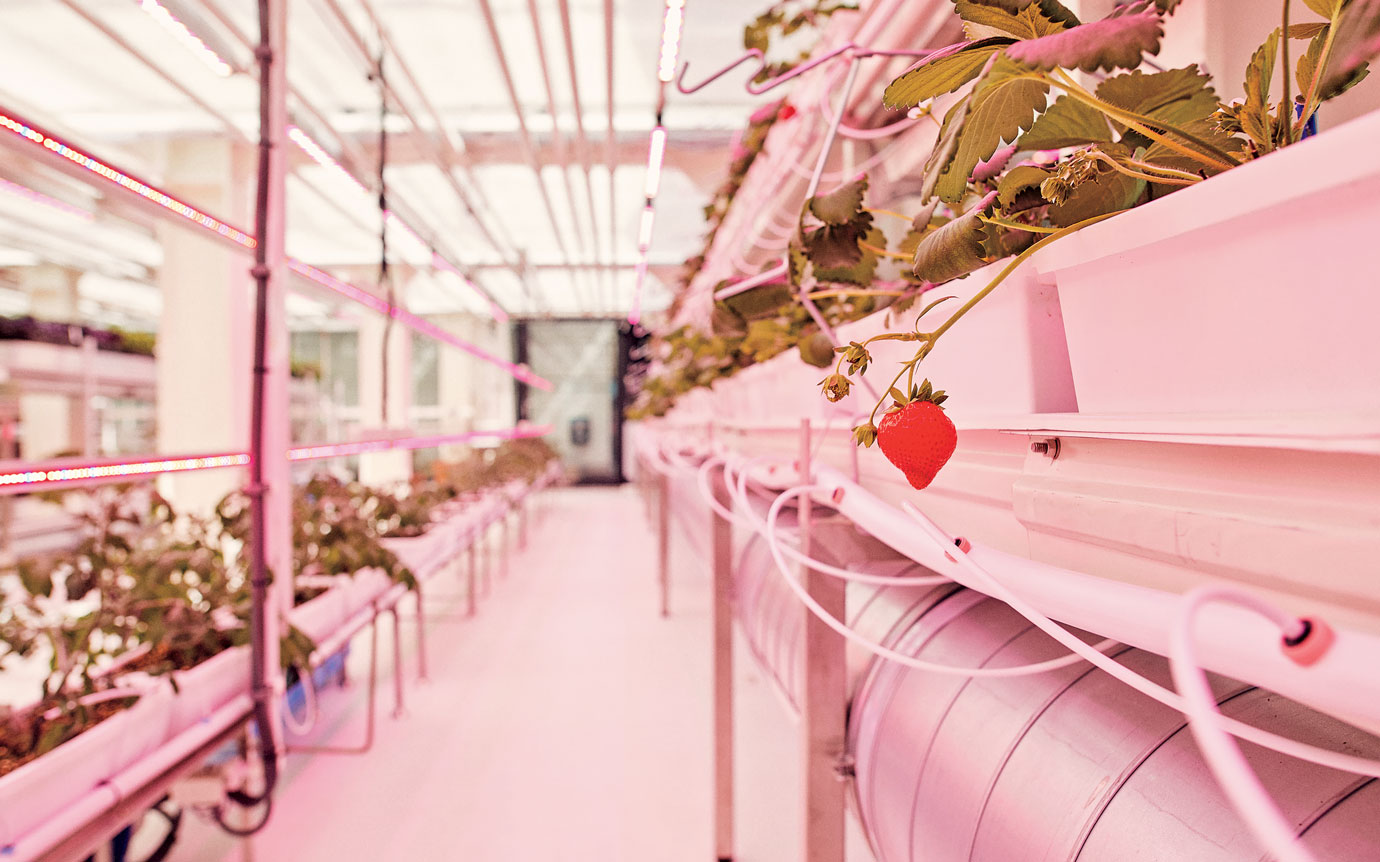Above: The greenhouse at the QO Amsterdam. Photo: QO Amsterdam Hotel
From eco-friendly hotels to activist galleries, Amsterdam is full of tourist experiences that prioritize sustainability and social responsibility. Here, an itinerary for a visit that will make a positive impact.
Sleep
Practically every element at the 288-room QO Amsterdam hotel is driven by a commitment to sustainable luxury. The building, in the formerly industrial neighborhood of Amstelkwartier, features an aluminum-paneled “intelligent facade” that responds to both indoor and outdoor conditions, trapping heat or reflecting sunlight and greatly reducing energy usage; the carpeting is made from yarn recycled from fishing nets; and the 21st-floor greenhouse provides vegetables, fruits, and herbs for in-house restaurants Persijn and Juniper & Kin.
Eat
Amsterdam-Noord’s De Ceuvel is a former shipyard that has been redeveloped into an office park , with houseboat s serving as workspaces for artists and entrepreneurs. At Café de Ceuvel, which was built with salvaged materials from the Port of Amsterdam, everything on the menu is either hyper-local or sustainably produced. Order croquettes filled with oyster mushrooms grown right around the corner, along with a De Betuwse Krenkelaar, a cider made from discarded apples.
Drink
Founded by two psychiatric nurses who saw the difficulty their patients had getting jobs, Brouwerij de Prael hires many workers from oft-underemployed populations, including the homeless and former addicts. “People who work here are very proud to have a job, especially at a brewery,” says cofounder Fer Kok. Visit the waterfront-adjacent brewery or the nearby brewpub to try a bitter blond ale made with rainwater or a Belgian-style Tripel.

See
Power of Art House is a collective of artists that stages socially minded public art “interventions.” See some of these works in the ongoing Acts of Artivism exhibition at the group’s namesake gallery in Amsterdam-Oost. Examples include Moving People, a project that placed more than 10,000 miniature models of real-life refugees on the streets of Amsterdam to raise awareness about human migration, and Living Aleppo, a diorama of the Syrian city annotated with stories about residents’ experiences of the country’s long-running civil war.
Buy
Every year, Amsterdam garbage boats remove more than 92,000 pounds of waste from the city’s canals. WasteBoard takes plastic bottle caps pulled from the water and upcycles them into skateboard decks, using about 1,000 caps per board. The colorful, Impressionist-style designs would make Vincent van Gogh proud.
